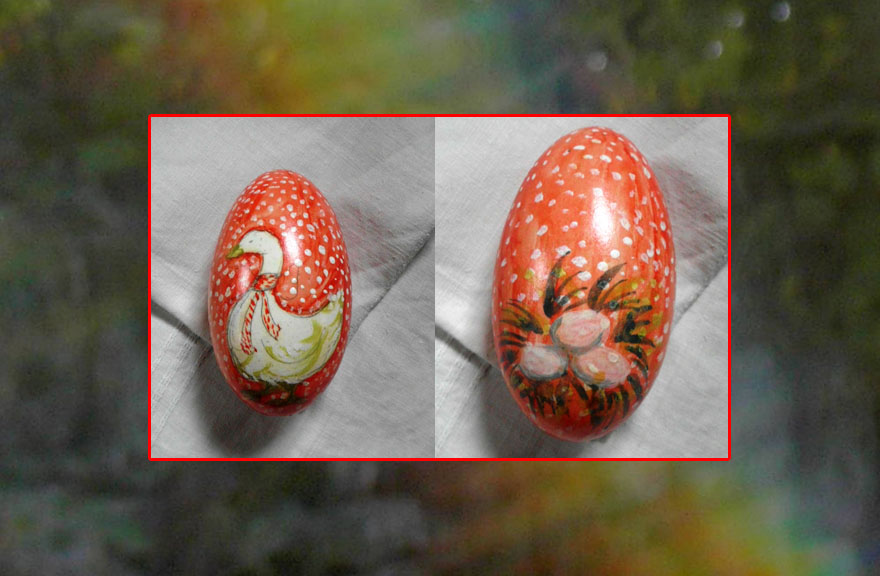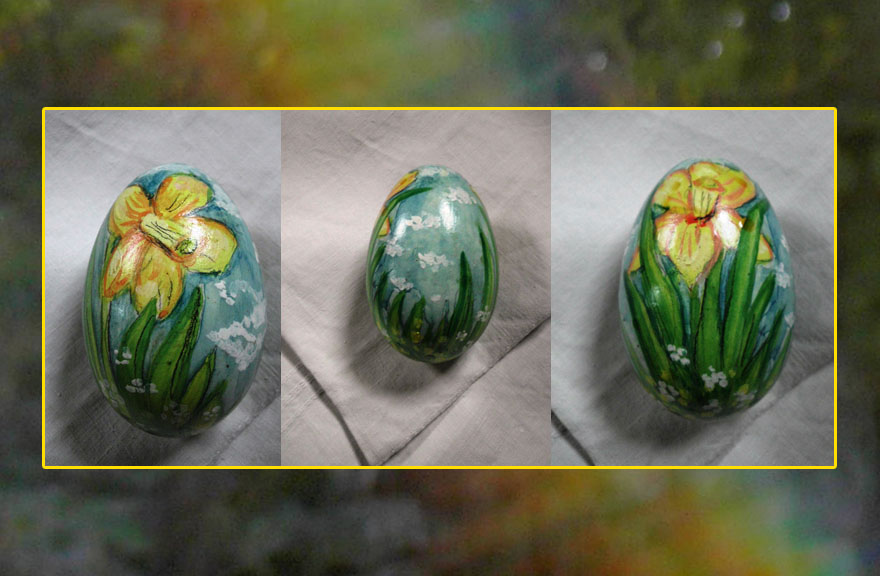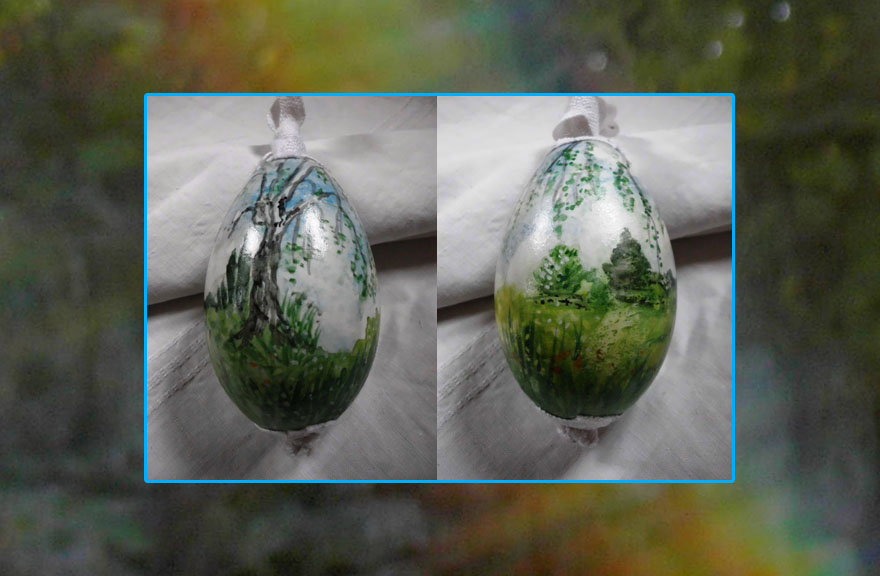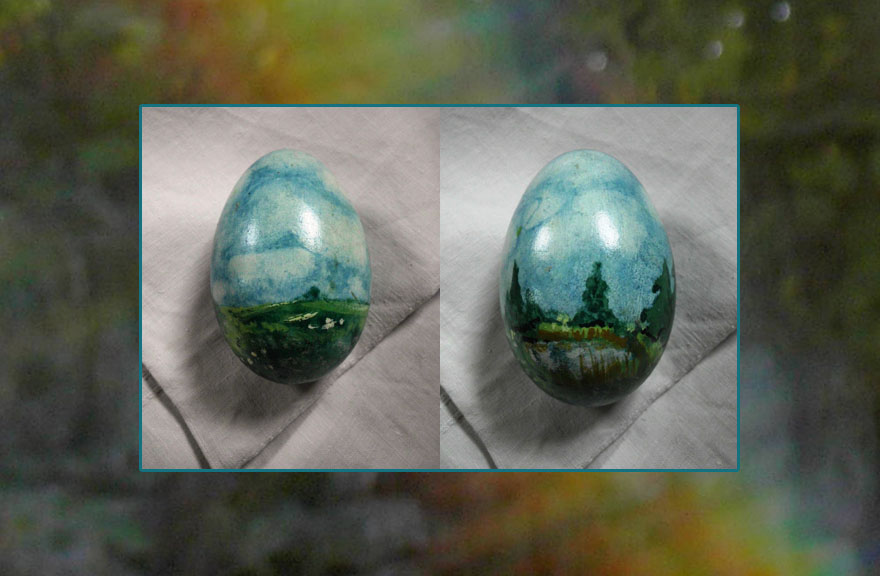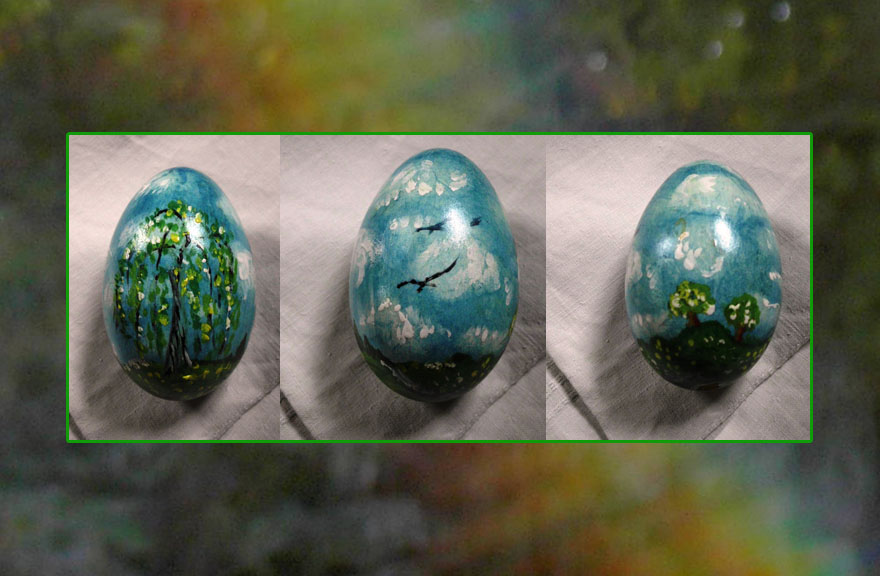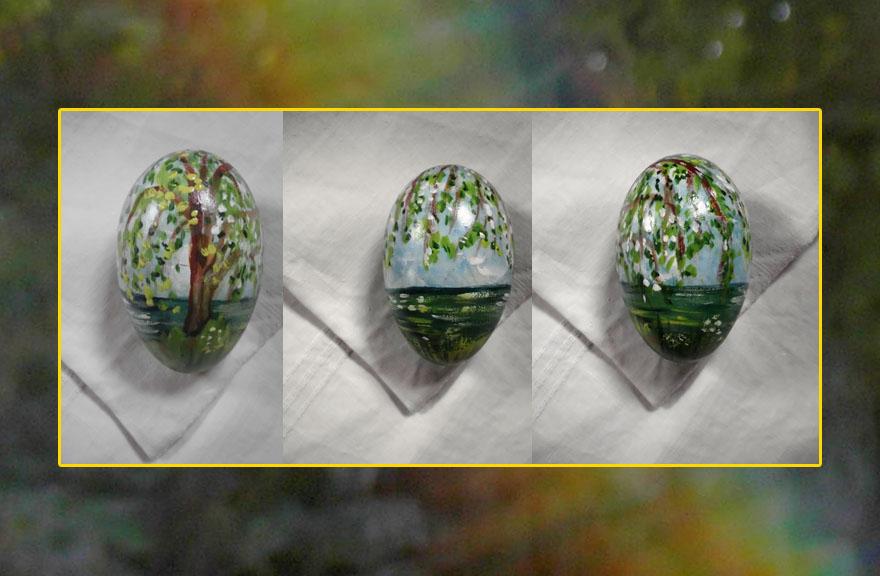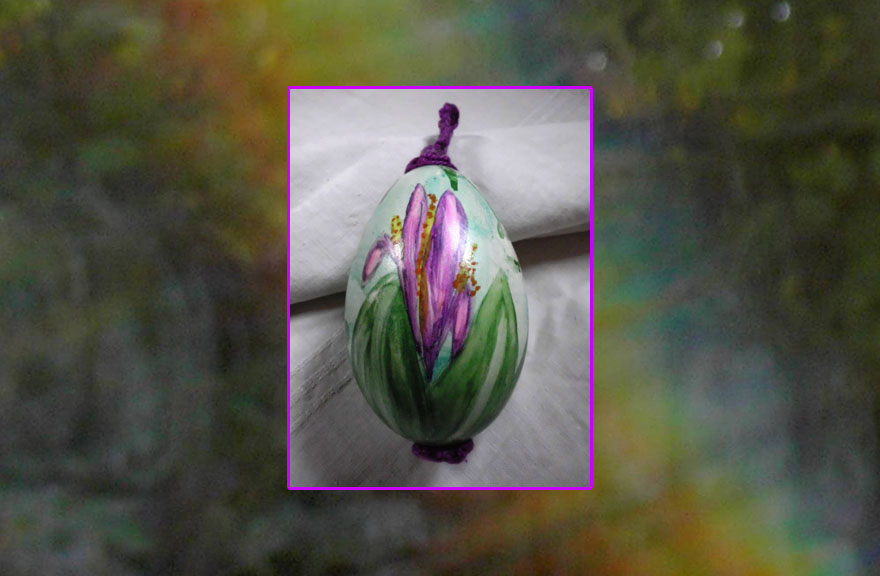- earth-collectiode-infecting -colors FINE ART GALERY
- a walk at Rhineland-Palatinate
- landscapes of Europe/Landschaften Europa´s
- Silicatmalerei auf Außenputz in alter Beschichtungstechnik
- impressiones del Andalus/ Impressions of Andalusia
- watercolors on geese eggs
- Blütenmalerei /BLOSSOMS
- Essen /Food
- bodies/Körper
- cosmos
- black on white
- GRAFIKEN UND DESIGN
- digitale grafiken
- DOLFINS/ DELFINE
- out of the layers
- FOTOGRAPHS
- Child to Child Orphanage UGANDA
- projekte
- Impressum
- Kontaktformular
- Gästebuch/GUESTBOOK
- FRIENDS OF EARTH-COLLECTION LINKS
watercolors on geese eggs
geese eggs have a surface as best painting papers we found out
much fun
earth-collection
and a nice possibility to avoid plastic dekorations to produce less vaste!
eine schÖne Alternative zu Plastikdekoration,
die Müll vermeiden und Rohstoffe sparen!
viel Spass beim selbst ausprobieren!
Hidden Histories: |
|
| |
|
| ||
|
In 1972 designer and educator Victor Papanek criticized the design profession for creating products wasteful of environmental resources and submitting to consumerism. He challenged designers to produce more ethical products, low technology for people in developing countries, help for people with disabilities, and products not harmful to the environment. He called for a new design culture based on social responsibility. His criticism came at a time that Tracy Bhamra and Vicky Lofthouse refer to as the first of three waves in the evolution of the concept of sustainability.6 The first wave they identify started in the 1960s and 1970s. Growing public concern for the environment had been aroused by Rachel Carson's book Silent Spring, published in 1962, highlighting the dangers of pesticides to both ecosystems and humankind. In 1968 scientist James Lovelock wrote his Gaia hypothesis that the earth is a self-regulating organism which can keep its climate and chemistry at a state suitable for life. In the same year Bill Andes on the Apollo 8 mission gave us the Earth Rise photograph, providing us with a view we had never seen before of our planet from space. A year later the environmental group Friends of the Earth was formed. Then in early 1970 Greenpeace was founded. At around the same time the first energy crisis occurred, alerting us to the dangers of relying on fossil fuels for our existence. The hippie generation began to question conventional design as being harmful to the planet. They were concerned with finding different ways of doing and making things and consulted the Whole Earth Catalog on issues of self sufficiency and alternative technology. It was at this time that Victor Papanek and a small number of other pioneers in the design world started to examine ways of making products that used less energy and made use of recycled materials. Papanek did a lot of work for UNESCO and designed many simple "gadgets" for people in the developing world. One item he and one of his students designed was a radio made from one transistor and an energy source consisting of paraffin wax and a wick housed in a recycled juice can. The design was very successful for its purpose but invited criticism from the design world at the time because of its "ugly" appearance. Papanek realize the importance of cultural aspects in design. He had not imposed his ideas of "good taste" on the appearance of the radios because he believed the Indonesian people would want to decorate them to their own needs.7 (For a chart outlining a brief history of environmental politics and theories in relation to graphic design see Gerber, 2008.)8
The second wave en route to sustainability occurred in the 1980s and 1990s. A wave of environmental crises, including Bhopal and Chernobyl, resulted in increased environmental and safety legislation being introduced. The public was becoming more environmentally aware and designers had started to produce "environmentally friendly" green products, though not all lived up to their names. The Green Consumer Guide was published in 1988 and proved a useful resource for concerned citizens, protecting them from exploitation by some retailers who advertised their products as being greener than they actually were, i.e. making false or distorted claims or Greenwashing. So far the terms Green design and eco-design had existed almost alongside each other; green design had its roots in green politics, but as the term became outdated eco-design took over. Green design described a process of dealing with individual environmental impacts, eco-design dealt with environmental impacts over a product's entire lifespan from cradle to grave. Taking life-cycle models from ecology, eco-design was concerned with environmental impacts from the conception of the project, when purchasing raw materials, during production, manufacture and use and finally disposal at the end of the product's life. The third wave was prompted by the publication, in 1987, of the Brundtland Report, our Common Future, produced by the World Commission on Environment and Development, which introduced the term "sustainable development, " "development that meets the needs of the present without compromising the ability of future generations to meet their own needs." The term was much broader than that previously used, introducing a global perspective to the consumption of energy and resources. The agenda now was concerned with moving from a product-based level towards looking at systems and services. Instead of just being concerned with environmental impacts, as was the case with green design and eco-design, sustainable design includes the impact on people and is involved with social and ethical constraints. Designers are now being asked to think about both the global and local effects of their actions. We live in an unequal world; this is exemplified by the fact that twenty percent of the world's population consumes eighty percent of the world's resources. The aim of the emerging sustainable design is to live within our ecological means not only on an environmental level but socially and ethically also. To summarize: the first wave arose due to a growing awareness of environmental problems leading to the emergence of environmental action groups. The second wave occurred when consumers started to demand eco-friendly products as a result of concerns over further environmental crises. The third wave is about the growing realization that the actions we have taken so far are not sufficient to halt the impending crises of global warming and climate change. A small proportion of the world's population is threatening the planet's ability to sustain life by over consumption of its resources. To be able to meet the challenges this brings, far more radical changes are needed. What might these be? Pauline Madge tells us that sustainable design is "a broader, long-term vision of eco-design" and that it can mean analyzing and changing the systems in which we make, use and dispose of products.9 Now the emphasis is on products, services and systems that meet human needs. The focus on needs leads to design theory and thinking based on social and cultural change. To be able to meet the challenge of sustainable product design, Victor Margolin says there must be a shift in design culture from designing objects to returning to design's original concept: that of problem solving and thereby adding to human well-being.10 So the transition from green design to eco-design to sustainable design can be seen as one of "broadening of scope in theory and practice," as designers become aware of environmental issues and how to deal with them. This is reflected in current events; in 1997 the Kyoto Protocol was introduced, a document setting goals for the reduction of greenhouse gas emissions. In 2002 the second World Summit on Sustainable Development was held. Although decisions were made on a number of issues, it was agreed that progress towards sustainable development was slower than anticipated. However, designers were beginning to rise to the challenges. In 2005 John Thackara called for a change in design culture in his book In the Bubble, in the same year that the Kyoto Protocol was ratified. One of the main problems designers have had to face is where to start. The Kyoto Protocol provides some clues. The Kyoto report highlights six themes seen as problem areas suitable for design activity: "quality of life, efficient use of natural resources, protecting the global commons, managing human settlements, the use of chemicals and the management of human and industrial waste, and fostering sustainable economic growth on a global scale."11 At last designers were being given a list of issues to address. |

MUCH THANKS
FOR TWEETING TO

